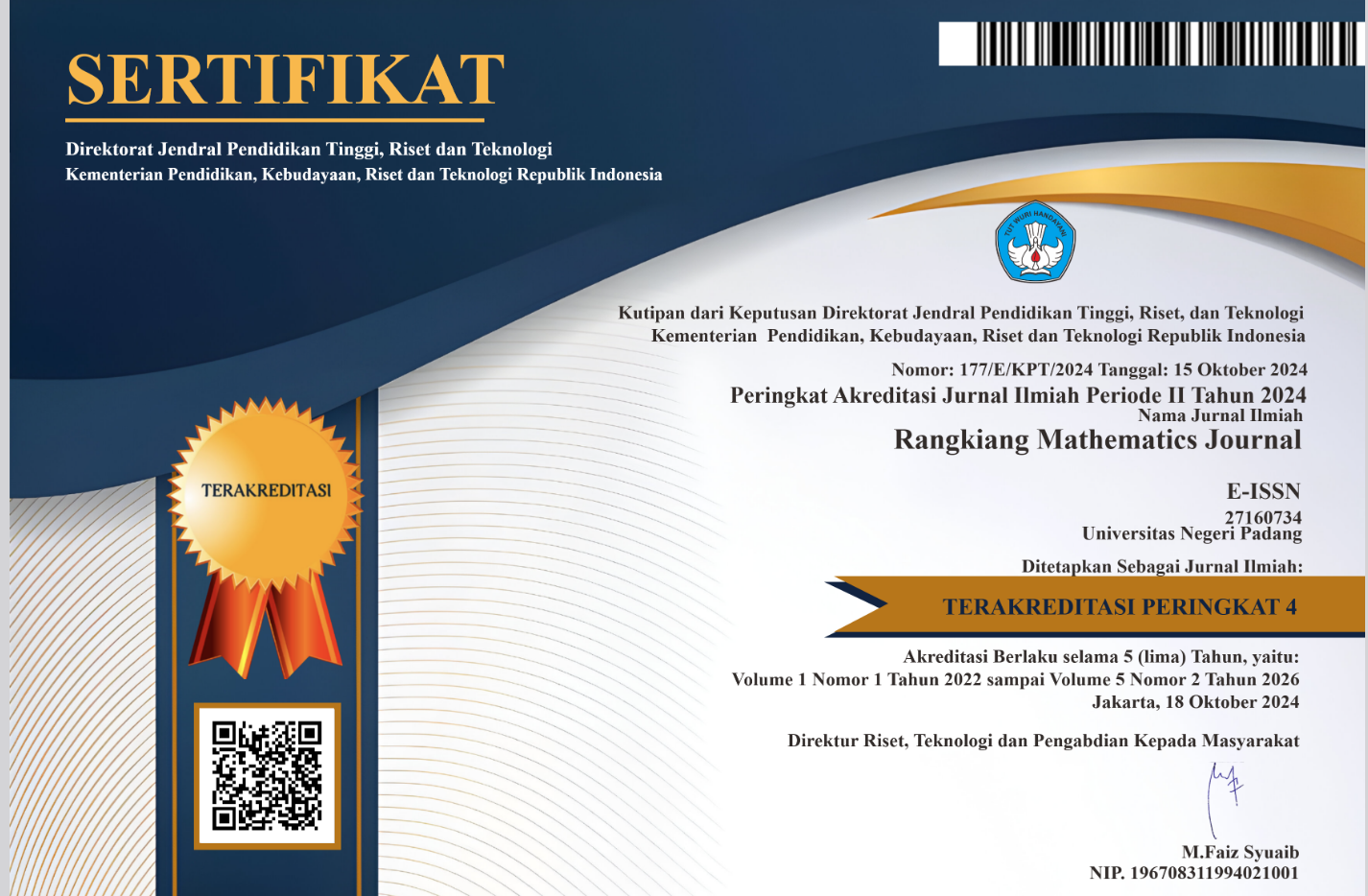Numerical Analysis of Hepatitis A Transmission Using the Susceptible-Infected-Treatment-Recovery (SITR) Model with Vaccination Using 14th-Order Runge-Kutta Method Runge Kutta Method
DOI:
https://doi.org/10.24036/rmj.v4i1.71Keywords:
Hepatitis A Transmission, SITR Model, 14th-Order Runge-Kutt, Socratic MethodAbstract
Hepatitis A remains a serious health issue in Indonesia, particularly in areas with poor sanitation. Poor sanitation significantly contributes to the transmission of Hepatitis A, as the disease is commonly spread through contaminated water and food. Inadequate waste management, lack of clean water access, and poor hygiene practices increase the likelihood of outbreaks, especially in densely populated areas. This study aims to analyze the dynamics of Hepatitis A transmission using the SITR (Susceptible-Infected-Treatment-Recovered) model, incorporating vaccination and treatment interventions. The methodology involves mathematical model construction, stability analysis, and numerical simulation using MATLAB's 14th-order Runge-Kutta method. Simulation results indicate a decline in the susceptible population (S) from 80% to nearly 0% due to high transmission rates (beta = 0,4286-0,9) and vaccination effectiveness (sigma = 0,008-0,01). The infected population (I) decreases significantly through treatment interventions (eta = 0,1-0,3) and recovery rates (gamma = 0,0825-0,37), while the recovered population (R) dominates up to 95% by the end of the simulation. The combination of vaccination, expanded treatment access, and improved care quality effectively suppresses disease spread, even under high transmission conditions. This study recommends multidimensional interventions such as mass vaccination, sanitation education, and rapid medical response for controlling Hepatitis A outbreaks.
















